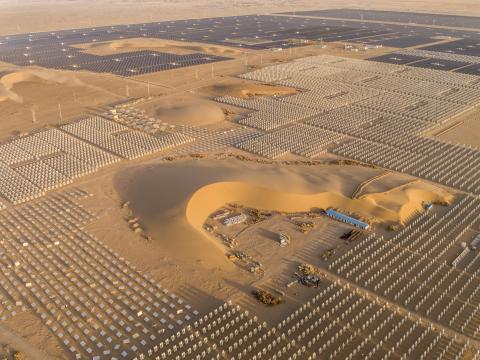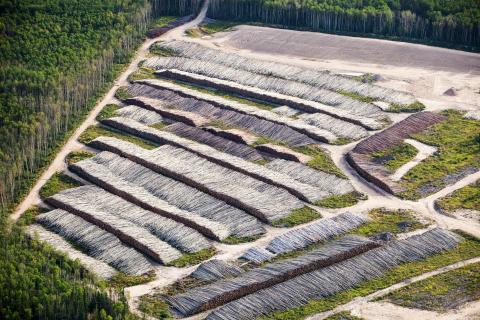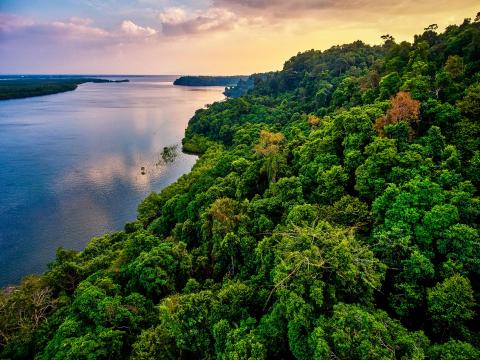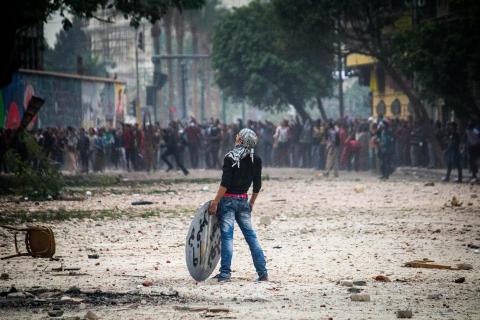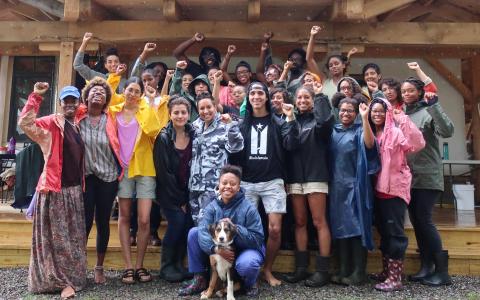Frameworks for Action
These are the six basic frameworks for action to solve the climate crisis. They overlap in many ways; however, each category holds multiple levels of discovery, innovation, and breakthrough.
Wodaabe pastoralists, the last nomadic peoples in these areas, migrate the Sahel from northern Cameroon to Chad and Niger. Hindou Oumarou Ibrahim and her fellow pastoralists walk for many miles a day balancing water, a precious resource before the rainy season in the parched lands, on their heads. Ibrahim introduced geospatial imagery to improve Wodaabe success on their thousand-kilometer journeys and is one of the founders of the Association of Indigenous Women and Peoples of Chad.
Credit: Ami VitaleEquity
This comes first because it encompasses everything. All that needs to be done must be infused by equity. Fairness is about social systems—how we treat one another, how we treat ourselves, and how we treat the living world. The planet has been transformed in a blink of an eye. If we are to transform the climate crisis, we need to transform ourselves, and we had best not blink. Time is of the essence. Social systems require the same level of care, attention, and kindness as ecosystems. They are incomparable yet inseparable. The state of the environment accurately reflects the violence, injustice, disrespect, and harm we do to people of different cultures, beliefs, and skin color. As Jane Goodall points out, you save forests and species by helping to create better lives for people.
The East Golmud solar development started in 2009 and consists of several different solar companies. The existing and planned solar parks will make Golmud China’s largest producer of solar electricity, covering 120 square kilometers by 2030 and generating one billion watts (a gigawatt) of electricity. It is located north of the Tibetan Plateau at 9,200 feet and is raked by strong winds that create crescent-shaped, concave sand dunes.
Credit: George SteinmetzReduce
The primary method of reversing global greenhouse gas emissions is simple: stop putting them into the atmosphere. It is also the most difficult, while being the greatest economic opportunity. The amount of carbon-emitting fossil fuel consumed is astonishing. Every day, the world burns 100 million barrels of oil, 47 billion pounds of coal, and 10 billion cubic meters of natural gas, which together emit 34 billion tons of carbon dioxide every year. Reduce puts an end to the emissions from agriculture, transport, food systems, deforestation, desertification, and ecosystem destruction. The implementation of renewable energy from wind, solar, energy storage, and microgrids are critical, and well on their way. Equally important is the reduction of energy and material use. Reduce solutions include electric vehicles, micro-mobility, carbon-positive buildings, walkable cities, carbon architecture, electrified buildings, minimized food waste, and the next category: Protect.
Boreal forest trees clear felled to make way for a new tar sands mine north of Fort McMurray, Alberta, Canada.
Credit: Ashley Cooper/Nature Picture LibraryProtect
Protect is synonymous with preserving, safeguarding, and defending. Terrestrial systems hold 3.3 trillion tons of carbon in and above ground. That is about four times as much carbon than is in the atmosphere. The carbon is contained in forestlands, peatlands, wetlands, grasslands, mangroves, tidal salt marshes, farmland, and rangeland. We need to keep it here on earth. Every year, some portion of each of these ecosystems is degraded, developed, converted, or lost. It is a relatively small percentage, but it adds up. When living systems break down or are destroyed, the plants and organisms below and above ground die, resulting in carbon dioxide emissions. If we lose 10 percent of the earth’s terrestrial systems, those emissions could increase carbon dioxide in the atmosphere by as much as 100 parts per million.
The Southern Cardamom Forest lies in southwest Cambodia and covers 1.24 million acres of relatively intact tropical forest. Offset payments fund rangers, who confiscate over fifteen hundred chain saws a year from illegal loggers. It is home to more than fifty endangered species, including the Asian forest elephant, clouded leopard, pileated gibbon, Siamese crocodile, and sun bear. Offsets prevent 110 million tons of carbon emissions and support the local communities in tenure registration, scholarship funding for higher education, and ecotourism projects.
Credit: Andrea PistolesSequester
There is a natural carbon cycle that has been functioning for hundreds of millions of years. Carbon moves in and out of the atmosphere. Forests, plants, and phytoplankton take in carbon dioxide and convert it to oxygen and carbohydrates. Roughly 25 percent of our carbon emissions are absorbed by oceans and transformed into fish, kelp, whales, shells, seals, and bones, but most of it is converted to carbonic acid, which is slowly killing sea life and is leading to a dead ocean. The primary way human beings can sequester is through regenerative agriculture, managed grazing, proforestation, afforestation, degraded land restoration, replanting mangroves, bringing back wetlands, and protecting existing ecosystems. The oft-used term net-zero emissions is not the goal. It is the threshold where the world begins to reduce atmospheric carbon levels back to pre-industrial levels.
A protester holding a makeshift shield stands on Mohammed Mahmoud Street in downtown Cairo, as clashes erupt between protesters and riot police on the anniversary of the Mohammed Mahmoud protest and clashes during the “Arab Spring.”
Credit: Ester Meerman/Getty ImagesInfluence
Influence encompasses laws, regulations, subsidies, policies, and building codes. It is one thing to cease using plastic bags. It is better to get single-use plastic banned. As each of us endeavors to examine and modify our impact, we gain insight into the cause of degenerative processes, products, and services. You can’t fix pollution, degradation, or plastic downstream. The cause is upstream, and that is where influence needs to be directed. It can start with the purchasing policies of one’s school, city, or business. Influence can be exerted in the form of letters, emails, or messages to corporations and trade associations. It can mean speaking with or writing to city councils, provincial or state legislators, governors, presidents, and members of Congress or Parliament. It can take the form of boycotts and protests. Each of us has but one voice. When one voice becomes “we,” change happens.
Support
In virtually every area of climate, social justice, and the environment, there are organizations that are highly competent at what they do, that are ahead of the curve and embody knowledge and networks that make them the most effective change agents. Links within Nexus in the Action + Connection section offer lists of the organizations around the world that are true regenerators, leaders who are often working with limited resources, citizens doing the extraordinary activities that governments and big business should be undertaking but are not. The lists in Nexus are specific to place, ecosystems, species, social justice, food, pollution, water, and more. You can find them quickly and easily to match the geographies and areas in which you want to help make change.


